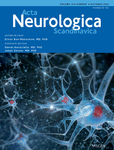Efficacy of lacosamide and phenytoin in status epilepticus: A systematic review
Funding information
This research did not receive any specific grant from funding agencies in the public, commercial, or not-for-profit sectors.
Abstract
Objectives
To compare the evidence on efficacy, safety, tolerability, and impact on short term/long functional outcome of lacosamide (LCM) and phenytoin (PHT) in patients with status epilepticus.
Materials & Methods
We conducted a systematic literature search of relevant electronic databases using a suitable search strategy to identify studies directly comparing PHT and LCM, irrespective of dose and duration in patients with convulsive and/or nonconvulsive status epilepticus (SE). We used a standardized assessment form to extract information on the study design, data sources, methodologic framework, efficacy, and adverse events attributed to PHT and LCM from included studies and compared the efficacy and safety outcomes, using a fixed/random effect model.
Results
Five studies were found to be eligible for inclusion out of 192 search items, enrolling a total of 115 and 166 participants (predominantly with SE) in LCM and PHT arm, respectively. Baseline characteristics were comparable between both arms. The proportion with seizure control was comparable between both arms (57.3% in LCM vs. 45.7% in PHT arm, p = 0.28) and even in the subgroup analysis separately for convulsive and non-convulsive SE. Proportion with treatment-emergent adverse events (TEAE) were comparable in both (17.6% vs. 12.2%, p = 0.20), but serious adverse events (SAE) were higher in PHT arm (5.1% vs. 0.8%, p = 0.049). The proportion with all-cause mortality and survival with moderate-severe disability were comparable between both arms (p = 0.23 and 0.37, respectively).
Conclusion
LCM has comparable efficacy with fewer SAEs as compared to PHT for achieving seizure control in patients with SE.
CONFLICTS OF INTEREST
None.
Open Research
DATA AVAILABILITY STATEMENT
NA




